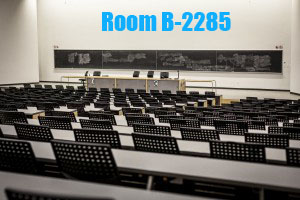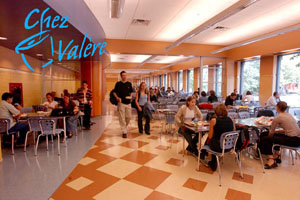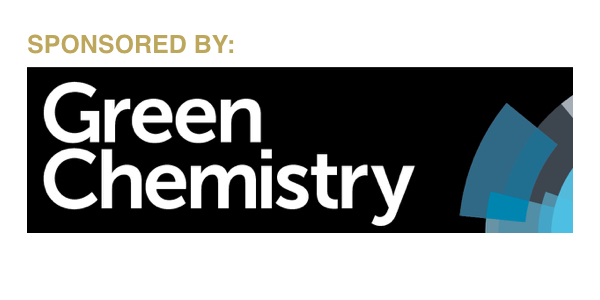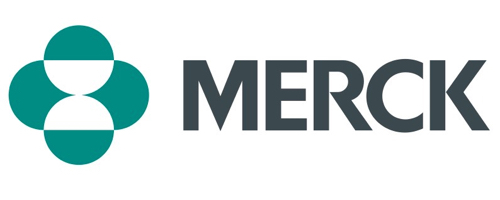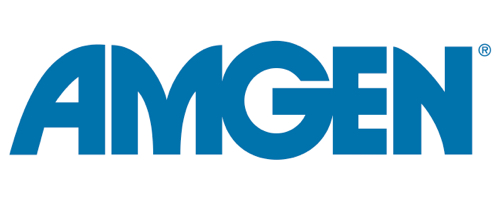Download Abstract: The selective introduction or modification of functional groups in complex molecules has been a
longstanding challenge in catalysis. Our group has developed practical methods for the catalytic
functionalization of C-H bonds with boranes, silanes and azides. These studies have resulted from a
general strategy in which a single C-H bond functionalization reaction that installs a temporary
functional group can be used to create range of products. This research has led us to seek new systems
for the functionalization of C-H bonds in complex molecules and to develop new classes of catalysts that
create new capabilities of achieving selective catalysis with transition metal centers. This lecture will present recent directions of research in our group toward discovering selective C-H
bond functionalization reactions of both small and complex molecules. The design and selection, as well
as the intimate mechanism, of catalysts and catalytic reactions for selective functionalization processes
will be presented.
Venue: B-2285, Jean Brillant Building, UdeM
Download Abstract: Our group is interested in exploring cytochrome P450 catalysis as a strategy to mediate the selective, late-stage transformation of unactivated C(sp3)−H bonds in organic molecules. P450 enzymes constitute
attractive catalytic platforms for the oxyfunctionalization of organic compounds, but the lack of
effective strategies to refine their reactivity and site-selectivity currently limits their utility for synthetic applications. To tackle this problem, efforts in our laboratory have focused on implementing systematic, rationally-driven methodologies to modulate, predict, and ultimately, fine-tune the selectivity of these
enzymes. In this talk, we will give an overview of our recently introduced 'P450 fingerprint'-based
methods to rapidly map the active site configuration of these enzymes and predict their reactivity toward
a variety of target substrates. Leveraging these methodologies, we have begun to evaluate the potential
of P450-mediated chemoenzymatic C−H functionalization as a new, enabling strategy for the late-stage
elaboration and optimization of bioactive natural product scaffolds. In the second part of the talk, we
will present our recent progress toward developing P450s into efficient catalysts to promote the selective
amination of aliphatic C−H bonds via nitrene C−H insertion, a transformation which has so far been
restricted to the realm of synthetic transition metal catalysis. The presentation of these results will be
accompained by a discussion on our current mechanistic understanding of these reactions and the
implementation of mechanism-guided rational design strategies to enhance the C−H amination reactivity
of these biocatalysts.
Venue: B-2285, Jean Brillant Building, UdeM
Download Abstract: Continuous flow processes form the basis of the petrochemical and bulk chemicals industry where strong competition drives the need for highly performing, cost effective, safe and atom efficient chemical operations. Fine chemicals, such as drug substances and active pharmaceutical ingredients (APIs), are generally considerably more complex than commodity chemicals and usually require numerous, widely diverse reaction steps for their synthesis. The advantages of continuous flow processing are increasingly being appreciated also by the pharmaceutical industry and, thus, a growing number of scientists, from research chemists in academia to process chemists and chemical engineers in pharmaceutical companies, are now starting to employ continuous flow technologies on a more routine basis. Owing to the small reactor volumes, the overall safety of the process is significantly improved, even when harsh reaction conditions are applied. Thus, microreactor technology offers a unique way to perform ultrafast, exothermic reactions, and allows the execution of chemistries which proceed via highly unstable or even explosive intermediates. In this lecture, contributions from our research group in the field of continuous flow processing will be highlighted. Emphasis will be given to highly atom efficient and process intensified chemical transformations useful for the synthesis of APIs or key intermediates that rely on C–H activation and related chemistries including photoredox catalysis, catalytic cross-dehydrogenative-coupling (CDC), the direct arylation of arenes, Fenton chemistry, and the C–H activation of methyl groups using Pd/O2.
Venue: B-2285, Jean Brillant Building, UdeM
Download Abstract: Two methods for functionalization of C-H bonds will be presented: 1) the C-H functionalization of substrates such as amines, nitriles, ketones, isocyanates alpha to heteroatoms with transiton-metal catalysts gives alpha-transition-metalated intermediates, from which various useful methods for unique and selective carbon-carbon bond formation can be constructed. Acid-base ambiphilic transition metal catalyst would be a future key catalyst; 2) the C-H functionalization by bio-inspired metal catalysts and biocatalysts with molecular oxygen or peroxides provides useful methods for catalytic C-H oxidative functionalizations of various substrates such as amines, amides, and even non-activated hydrocarbons under mild conditions.
Venue: B-2285, Jean Brillant Building, UdeM
Download Abstract: Advances in achieving site-selectivity in small molecule catalyzed C–H oxidations without the use of
directing groups will be discussed. The first approach is the development of small molecule catalysts
that are sensitive to the inherent electronic, steric, and stereoelectronic differences between C–H bonds
in complex molecule settings. A second, complimentary approach termed "trajectory restriction" uses
minimal steric blocking elements incorporated into a small molecule catalyst to increase
catalyst/substrate non-bonding interactions, while maintaining structural flexibility such that substrates
of diverse topologies are accommodated. Using a combination of these approaches, unprecedented sitedivergent
diversification of complex bioactive molecules like artemisinin can now be easily achieved.
To maximally benefit from these approaches, a user-friendly catalyst reactivity model that calculates and
even predicts the major site of oxidation as well as the magnitude and direction of the site-selectivity in
complex substrates as a function of catalyst has been developed and will be discussed.
Venue: B-2285, Jean Brillant Building, UdeM
Venue: Cafeteria Chez Valère ((B-2294), Jean Brillant Building, UdeM
Download all poster titles and abstracts: Poster boards (#PO36 to #PO70) will be displayed in the corridors adjacent to Room B-2285. Presenters will be able to set up their posters at any time during the day. For inquiries, please see our volunteers.
Venue: Corridors of B-2285, Jean Brillant Building, UdeM
Download Abstract: Doravirine is non-nucleoside reverse transcriptase inhibitor (NNRTI) currently in phase III clinical trials
for the treatment of HIV infection. Herein we describe a robust kilo-scale synthesis for its manufacture
used to supply pre-clinical and clinical supplies. The structure and origin of major impurities was
determined and their fate and purge studied. This resulted in a re-design of the route to introduce the key
nitrile functionality via a copper catalyzed cyanation in order to ensure all impurities were controlled to
an adequate level. The limited availability of 3-chloro-5-iodo-phenol prompted us to develop a metaselective
iridium catalyzed C–H borylation-oxidation sequence which readily afforded the desired
phenol. Overall, the synthesis could be scaled to prepare Doravirine in >90 kg batches and was used to
prepare all pre-clinical and clinical material up to phase III. The synthesis affords high quality material
in a longest linear sequence of 6 steps and 37% overall yield.
Venue: B-2285, Jean Brillant Building, UdeM
Download Abstract: Several first row transition metal catalysts employing iron, cobalt, and nickel with non-innocent ligands
have been synthesized and their ability to catalyze dehydrogenation of alcohols and amines, as well as
their ability to hydrogenate ketones and quinolines, has been comparatively evaluated. The scope and
mechanism(s) of these reactions have been examined. Also, the use of an alcohol dehydrogenation
catalyst along with an Aldol condensation catalyst has led to a new route to convert ethanol directly and
cleanly to 1-butanol.
Venue: B-2285, Jean Brillant Building, UdeM
Download Abstract: The oxidative intramolecular Pd(II)-catalyzed amination or oxylation of unsaturated N-sulfonyl carbamates, N-sulfonyl carboxamides1 and carboxylic acids takes place through the involvement of cyclic aminopalladated or oxypalladated intermediates. These intermediates may subsequently evolve along different pathways such as distocyclic or proxycyclic β-H elimination, oxidative oxylation, or intramolecular carbopalladation, as a function of
the nature of the substrate and/or the reaction conditions. However, when the above reactivities are
inhibited, the palladated intermediates are only off-cycle intermediates in equilibrium with the initial
substrate. This hurdle opens the way to alternative oxidative cataytic cycles, the most relevant one being
the C-H activation of the allylic position. Our experimental studies in concerto with DFT calculations
allow putting forward an unifying mechanistic scenario that rationalizes the ensemble of the observed
results in this field.
Venue: B-2285, Jean Brillant Building, UdeM
Download Abstract: The transition metal catalyzed direct functionalization of unreactive C–H bonds represents one of the
most powerful tools for sustainable syntheses and opens a new route to pharmaceuticals and natural
products. A general drawback is requirement of stoichiometric external oxidant, such as Cu, Ag salts
and BQ, to complete the catalytic cycle, which would produce a stoichiometric amount of the reduced
external oxidant as waste and reduce the overall "greenness" of the process. Therefore, we have been
interested in developing some strategies to avoid the external oxidants, such as "internal" oxidant as a
directing group and starting materials, and redox process of substrates.
Venue: B-2285, Jean Brillant Building, UdeM
Download Abstract: Various C–C bond formation reactions, such as arylation, alkylation, benzylation, allylation, and
carbonylation with the cleavage of C–H bonds have been reported to date. However, the methylation of
C-H bonds continues to remain an undeveloped area, compared with the other type of C–C bond
formation reactions. Although the methyl group is one of the simplest functional groups, the
introduction of a methyl group at a C–H bond can have a significant effect on the biological and
physical properties of a drug, an effect that is known as a magic methyl effect. New types of Nicatalyzed
methylation of C–H bonds will be discussed.
Venue: B-2285, Jean Brillant Building, UdeM
Download Abstract: Before 2012 only a few scattered examples of C–H insertion reactions in gold catalysis existed. Then independent work of Liming Zhang's and Hashmi's groups demonstrated that unactivated sp3-C–H bonds can efficiently react with highly activated gold carbene species. From this a rich and versatile chemistry evolved. Now entirely new catalytic intra- and intermolecular C–H insertion processes of
highly reactive gold(I) intermediates, both from dual activation and activation by only one gold center, will be presented.
Venue: B-2285, Jean Brillant Building, UdeM
Download Abstract: The direct arylation of pyridine derivatives using non-precious catalysts is underdeveloped but highly
desirable due to its efficiency to access important motifs while being extremely cost-effective. An
unprecedented nickel-catalyzed C-3 direct arylation of pyridinium ions was developed to provide a new
approach to valuable 1-azafluorene pharmacophore frameworks. This transformation is accomplished
using air-stable nickel catalyst precursors and tolerates a variety of substituents. Computational studies
were performed to further understand the unique reactivity of the pyridinium ions under these conditions
and the reaction pathway which leads to the products obtained.
Venue: B-2285, Jean Brillant Building, UdeM
Download Abstract: Considering the importance of chiral molecules, a continuous search for original strategies for
asymmetric synthesis presents a great scientific challenge. A direct functionalization of C–H bonds
opens new avenues in this field as now unprecedented retrosynthetic disconnections may be envisioned
to construct stereogenic scaffolds from simple starting materials in a step- and waste-economic manner.
Recently the potential of the chiral sulfoxide to play the role of both, a chiral auxiliary and a traceless
directing group, in C–H activation reactions, has been evidenced. The sulfoxide-directed asymmetric C–H
functionalization enabled very efficient and highly stereoselective synthesis of various axially chiral
biaryls via direct C–C, C–O, and C–X couplings. The synthetic utility of this approach could by
illustrated by performing a straightforward synthesis of biologically relevant Steganone scaffold. The
latest results shows also that chiral sulfoxide directing group is also a promising tool to allow
challenging, asymmetric C(sp3)-H functionalization.
Venue: B-2285, Jean Brillant Building, UdeM
Download Abstract: The formation of dopaquinone during melanogenesis, catalyzed by the ubiquitous enzyme tyrosinase,
involves the oxygenation of a phenolic C–H bond via a side-on peroxodicopper(II) species made by
reaction between Cu(I) and O2 at 25 °C. Performing model Cu(I)/O2 reactions in solution, however,
leads to complexes that are thermally unstable (−80 °C) and difficult to study. By substituting O2 for
isoelectronic nitrosoaryl compounds (Ar–N=O), the chemistry is similar but the ensuing Cu/nitrosoaryl
complexes are stable at room temperature, and are thus more easily characterized and used. Upon
reaction with a phenolate, nitrene transfer occurs cleanly to yield a Cu-iminoquinone complex, which
releases an aminophenol under reductive work-up. This reaction is analogous to the
formation of quinones in Cu/O2 chemistry, and comparison with our mechanism of the catalytic aerobic
ortho-oxygenation of phenols provides hints on how to further develop this one-step C–H bond
amination.
Venue: B-2285, Jean Brillant Building, UdeM
Download Abstract: C–H amination is a very elegant, atom-efficient and potentially versatile approach to forge C–N bonds.
Catalytic pathways that involve bioinspired odd-electron mechanisms have gained momentum in the last
few years, with much emphasis currently on open-shell transition metal species as the locus of radical
reactivity. This approach requires the use of paramagnetic metal ions (e.g. high-spin FeII, CoII) to
generate metal-bound substrate radicals. Redox-active ligands have been overlooked as a tool to
invoke radical character onto metal-bound substrates. Palladium(II) is normally not disposed to induce
odd-electron chemistry onto bound substrates, e.g. organoazides. Employing a novel redox-active pincer
ligand, we have recently reported the first example of stoichiometric ligand-to-substrate single-electron
transfer, utilizing the coordination sphere of redox-inert Pd(II) as substrate-binding platform. This
concept proved competent for the intramolecular benzylic C–H amination of organoazides via nitrene
radicals. This contribution will discuss the overall strategy of ligand-mediated odd-electron
mechanisms for C–H amination on Pd as well as Fe, based on experimental and computational insight.
Venue: B-2285, Jean Brillant Building, UdeM
Make Reservation

